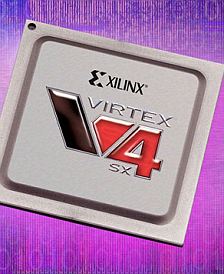Scientists squeeze more than 1,000 cores onto computer chip
January 5, 2011
Scientists at the University of Glasgow and the University of Massachusetts Lowell have created an ultra-fast 1,000-core computer processor.
They used a field programmable gate array (FPGA) chip, which can be configured into specific circuits by the user, enabling the researchers to divide up the transistors within the chip into small groups and ask each to perform a different task.
By creating more than 1,000 mini-circuits within the FPGA chip, the researchers effectively turned the chip into a 1,000-core processor – each core working on its own instructions.
The researchers then used the chip to process an algorithm that is central to the MPEG movie format — used in YouTube videos — at a speed of five gigabytes per second: around 20 times faster than current top-end desktop computers.
“FPGAs are not used within standard computers because they are fairly difficult to program, but their processing power is huge while their energy consumption is very small because they are so much quicker, so they are also a greener option,” said researcher Dr. Wim Vanderbauwhede.
While most computers sold today now contain more than one processing core, which allows them to carry out different processes simultaneously, traditional multi-core processors must share access to one memory source, which slows the system down. The scientists in this research were able to make the processor faster by giving each core a certain amount of dedicated memory.
Vanderbauwhede, who hopes to present his research at the International Symposium on Applied Reconfigurable Computing in March 2011, added: “This is very early proof-of-concept work where we’re trying to demonstrate a convenient way to program FPGAs so that their potential to provide very fast processing power could be used much more widely in future computing and electronics.
“While many existing technologies currently make use of FPGAs, including plasma and LCD televisions and computer network routers, their use in standard desktop computers is limited.
“However, we are already seeing some microchips which combine traditional CPUs with FPGA chips being announced by developers, including Intel and ARM. I believe these kinds of processors will only become more common and help to speed up computers even further over the next few years.”
Adapted from materials provided by the University of Glasgow
